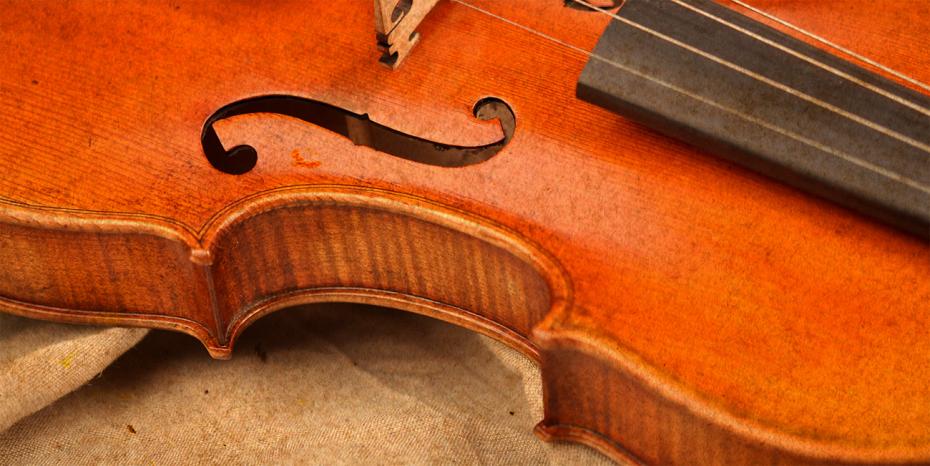You don’t need to be a music expert to know the name “Stradivari” (or Stradivarius, its latinized version). Along with his lesser known, but just as talented, Cremonese luthiers colleagues, Amati and Guarneri, he wrote a considerable piece of the history of music. Born around 1644, his family was old Cremona through and through, with deeds signed to his ancestors traced back to the 12th century.
His career as a violin maker started just as that of many other craftsmen or artists, with an apprenticeship. His was in the atelier of the first, great name in Cremona’s violin making industry, Niccolò Amati. Stradivari was only a young boy then: one wonders if he had ever imagined he was to become an even bigger name in the history of instrument making than his genial master.
Truth is that Amati and Guarneri’s violins are just as magnificent as Stradivari’s and that, according to many professional musicians, they have similarly beautiful harmonics and sound. Stradivari’s name, however, remained – and still is – etched with more intensity in the general public’ s mind.
The mystery of Stradivari’s divine instruments
One of the reasons behind his popularity is the fact his work is surrounded by an aura of mystery: no one after him managed to create string instruments of the same quality and producing the same sound. In spite of the obvious advances in technology, Stradivari’s violins remain the golden standard of luthier craftsmanship: strived for, yet unequalled and unreached.
No wonder the world of science has, for years, been trying to discover the secrets behind the Cremonese’s work, failing however to exactly pinpoint what makes his violins so special. One of the last researches was carried out in 2013 by a multidisciplinary équipe formed by the Laboratorio Arvedi at Pavia University, the Centro Universitario per le Datazioni at Milan Bicocca University, the Physics Department at Milan Statale University and the Civica Scuola di Liuteria, Milan’s own luthier’ s school.
Their aim: exploring the role of decorations and soundboard on the sound production of a Stradivari violin. Professor Malagodi, director of the project and head of Laboratorio Arvedi, stated that Stradivari’s approach to materials and technique was complex and varied, a certain sign of his knowledge of both ancient luthier techniques and technological innovations. The study showed the white lozenges adorning the soundboard’s edges are ivory and that, surprisingly, the black threading lining the sides of the instrument are not made with crushed ebony wood, as it was customary at the time, but painted using black ink. This particular procedure was read as a clear sign of Stradivari’s flair for innovation.
A fascinating research, without a doubt: yet, it failed, by its own admission, to prove anything about why Stradivari’s violins, quite simply, sound so incredible.
Previous works have attempted to give an answer, but nothing definitive has been truly produced: in 2009, University of Texas professor Joseph Nagyvary, after 33 years of strenuous investigation, came to the conclusion that it was the combination of chemicals used by Stradivari to treat his instruments against woodworm that, interacting with the wood, granted them such a unique sound.
In 2012, Professor Francis W. M.R. Schwarze, of the Swiss Federal Laboratory for Materials Science and Technology, came to the conclusion that the secret of Stradivari’s violins was all in the wood: according to his research, Stradivari used wood from trees exposed to the intense period of cold which hit Europe between the end of the 17th and the beginning of the 18th century. Extreme cold left wood very compact, yet elastic, characteristics which, Schwarze concludes, made the material perfect to build musical instruments. In fact, he goes even further saying the structural conditions of that wood can be recreated today, using specific types of fungi.
Theories of great interest, but it truly seems the mystery about what makes a Stradivari so unique remains largely unsolved.
Who owns Stradivarius today?
According to music historians, Stradivari and his atelier produced more than 1000 instruments between the end of the 17th and the beginning of the 18th century. Of them, around 650 still survive today and are either displayed in museums –you can see one in the Smithsonian – or owned privately.
What about musician, you may ask. Well, considering a Stradivari violin can reach the whopping price tag of 5 million USD these days, it is almost impossible that a professional violinist can afford to buy one. Stradivaris are usually bought by wealthy benefactors, who then loan them to soloists without charge, in exchange for private concerts and publicity. The same process takes place when the owner of the instrument is an association or a public institution.
If you wish to learn more about Stradivari and his world, head to Phoenix MIM (Musical Instrument Museum) for the Stradivarius: Origin and Legacy of the Greatest Violin Maker exhibition, organized by the museum in association with the Museo del Violino in Cremona and the Friends of Stradivari Association. Be quick though, it will only last until the 5th of June.






























